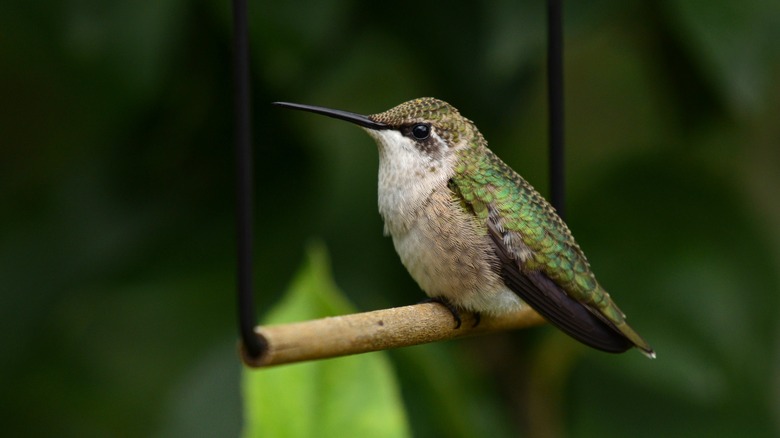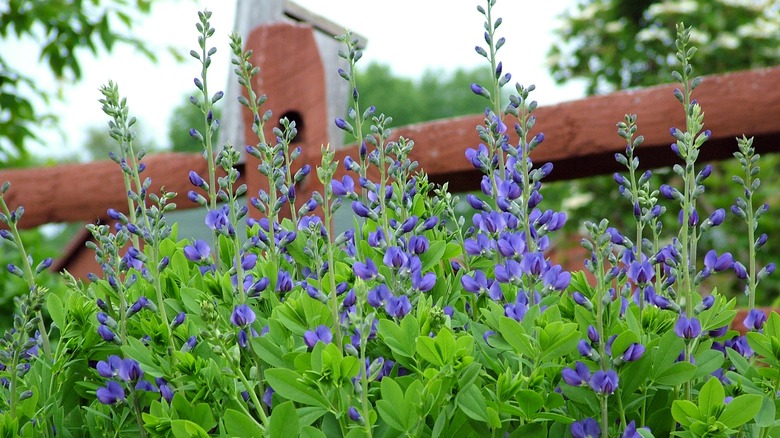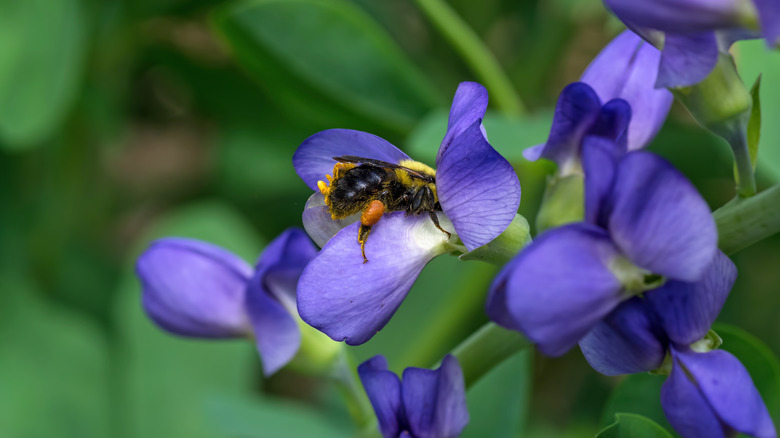Hummingbirds Love This Pretty Perennial That's Toxic To Humans
With their mad hovering skills and territorial nature, hummingbirds can be fascinating to observe in a garden. You can keep hummingbirds coming back to your yard again and again by choosing the right types of flowers. One to consider is Blue False Indigo.
The first couple of years after planting Blue False Indigo, you won't see many flowers. It develops a deep root system that helps with drought tolerance. Once established, though, this bushy plant grows up to four feet in height and produces deep blue spiky flowers with many individual blooms that will have hummingbirds flocking to your yard. And since it's a perennial, it'll keep coming back year after year just like the hummingbirds it attracts. It thrives in sunny locations but can be planted in partial shade, according to The Ohio State University Department of Plant Pathology, and likes space to spread out as it matures.
As a bonus, Blue False Indigo also attracts pollinators that can be beneficial to your vegetable garden along with butterflies. There is a caveat, however. This plant can be toxic to humans. This bit of information begs the question, is it one to avoid completely or can you live with the danger?
How toxic is Blue False Indigo?
Yes, Blue False Indigo is toxic if it's eaten (even though it's technically a perennial legume.) All parts of the plant from flower buds and roots to leaves to stems can make people sick, even the sap. The good news is that the poison severity is low when this plant is ingested by humans, according to NC State Extension. Symptoms of Blue False Indigo poisoning range from nausea and vomiting to diarrhea. It can also cause blurred vision and vertigo.
At this point, you might be wondering if Blue False Indigo is also harmful to pets and other animals if eaten. The answer is yes, but just like with people it's not deadly, so that's the best news of all. The toxicity is low, and the symptoms are much the same as those experienced by humans. Most animals don't like its unpleasant taste, however, so they steer clear of it.
Steps to take to when living with False Blue Indigo
While most animals will avoid False Blue Indigo due to its bitter taste, children should be taught to steer clear of it to avoid accidental illness. Better yet, common sense dictates considering its placement in an area where children and pets won't be tempted to ingest any part of this plant including the seed pods that form after it blooms.
The Texas Poison Center Network also recommends identifying and labeling potentially problematic plants growing near your yard and home, so you may decide to do that with these bushes. Since False Blue Indigo also grows wild in eastern parts of North America, according to the Wisconsin Horticulture Division of Extension, if your property borders a meadow, trees, or a stream, you can look for it growing there and educate your family about it. With some care, you can avoid illness from ingesting this flowering plant that hummingbirds love while still enjoying the antics of these little birds and the other beneficial pollinators it can draw to your garden.


